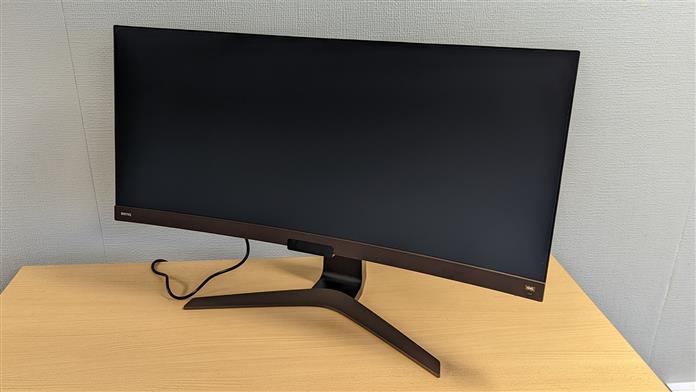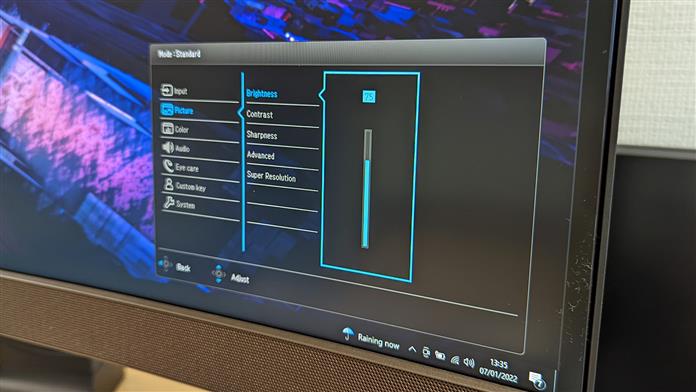Le moniteur BenQ EW3880R vaut la peine d’être étudié si vous recherchez l’un des meilleurs moniteurs ultra-larges – un moniteur qui va vraiment montrer vos films, vos jeux et peut-être même vos feuilles de calcul sur 37,8 pouces d’espace d’écran en diagonale.
Si vous vous demandez si le moniteur BenQ EW3880R est le bon choix pour vous, alors cet examen détaillé devrait vous donner toutes les réponses dont vous avez besoin : nous allons couvrir la qualité de l’image, les entrées disponibles, les haut-parleurs intégrés et bien d’autres plus d’ailleurs.
Whether you’re looking for the best ultrawide monitors, the best 4K monitors, the best gaming monitors or any other kind of display, there are new units appearing all the time, so make sure you do your research before picking a model and making a purchase.
BenQ EW3880R monitor review: design and setup

(Image credit: Future)
As you would expect considering its size, the BenQ EW3880R can be a bit tricky to set up – you can just about do it on your own, but you’ll probably want someone else to help you clip the stand into the base, and then the monitor on to the stand. There are four screws to tighten the connection between stand and monitor, so you’ll need a screwdriver as well. All the ports are around the back, facing down, and the on-screen display and other buttons sit behind the right-hand side of the monitor.
On the front we’ve got some reasonably thin bezels around the display itself, and there’s a speaker grille on the bottom chin, with an HDRi button on it (of which more in a moment). The BenQ logo on the left-hand side of the grille is tastefully done, and we don’t think anyone is going to find the design of the EW3880R ugly or off-putting, even if it is a bit bland (and that extends to the straightforward stand and base as well). Sometimes monitor design doesn’t have to be flashy.
If you’re wondering whether or not your desk has enough room to take the BenQ EW3880R, the dimensions of the monitor, the stand and the base assembled together are 896.3 mm x 580.1 mm x 294.4 mm (that’s 35.29 inches x 22.84 inches x 11.59 inches) with the monitor as high as it will go. The net weight is 13 kilograms or 28.66 pounds, so it’s not ideal if you want a display that you can quickly shift from desk to desk.
BenQ very nicely throws a USB-C cable and an HDMI cable into the box just in case you haven’t already got them, together with the power cable, and it makes getting set up even easier and quicker. It’s worth noting that there’s a remote control included with the BenQ EW3880R monitor as well, underlining its credentials as a screen for entertainment – you’re able to adjust the sound volume, change the display brightness, switch inputs and more without reaching for the on-board controls.
- We’ve collected together all the best gaming laptops
BenQ EW3880R monitor review: features and picture

(Image credit: Future)
With its 37.5-inch size, 3840 x 1600 pixel resolution and 300 nits of maximum brightness (with HDR on), the IPS LED BenQ EW3880R display is a pleasure to use whether you’re typing out emails, watching something on Netflix, or dabbling in a bit of gaming. While the 60Hz refresh rate and 4ms grey-to-grey response times aren’t anywhere near best in class for gamers, we didn’t notice a huge problem in terms of ghosting or motion blur. In short, it’s a really good all-rounder.
Bear in mind though that games and videos will need to support this ultrawide 21:9 aspect ratio, otherwise you’ll get black boxes at the sides of the display (not a huge problem, but something to be aware of). A lot of movies get filmed in this format now, but when it comes to TV shows, not so much. We like the 2300R curvature, which seems just right to create that immersive effect for games and videos, and there’s a decent amount of flexibility when it comes to tilting and rotating.
There is an integrated HDRi feature that gives you three HDR modes to pick from, with the i standing for intelligence – the idea is that the HDR automatically adjusts itself based on what you’re using the screen for, and in our experience it works pretty well. In terms of ports there’s a good selection too: two HDMI 2.0 ports, one DisplayPort 1.4 port, one USB-C port, and two USB-A ports for connecting and charging other devices.
As for the sound, we always like to see speakers integrated into monitors for simplicity’s sake – you can always add extra speakers if you want of course, and there’s a 3.5mm headphone back available on the back too. We were impressed by the quality of the 2.1 speaker setup (two 3W stereo speakers and an 8W woofer): it’s fine for watching movies and listening to music, and there’s a richness, depth and fidelity here that can match a lot of desktop speakers.
